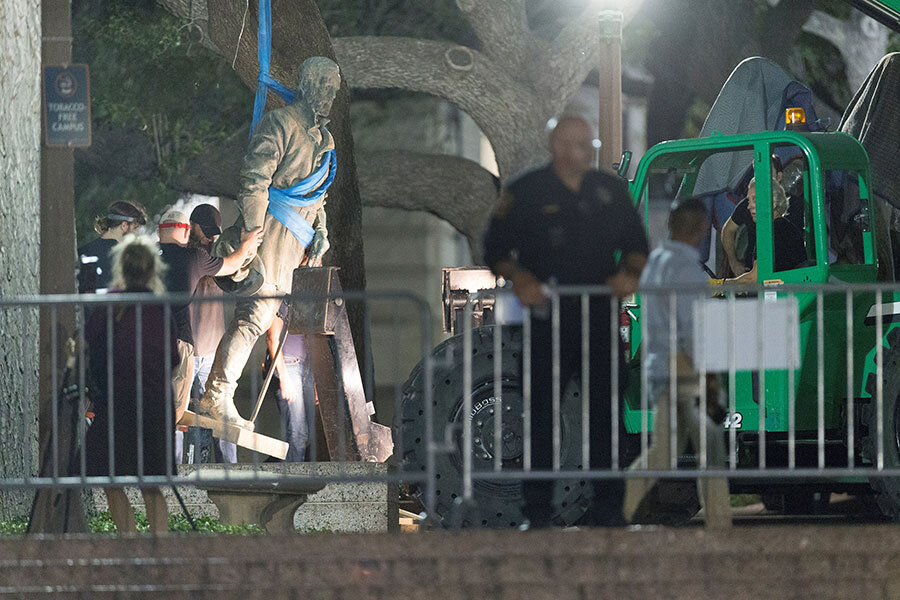Teachable monuments?
Loading...
A week after Charlottesville, Va., broke out in street battles over city plans to remove a statue of Robert E. Lee, the Confederacy’s iconic general is under siege on multiple fronts.
Duke University on Saturday removed a vandalized statue of Lee from the entrance to its chapel. The same is happening in Texas. And Maryland lawmakers want to retire Lee’s statue from Antietam, site of the greatest one-day loss of life on a battlefield in United States history.
The context for some of these statues is well known. Of the estimated 1,700 statues and artifacts honoring Confederate leaders across the country, most are in the South and weren’t erected until the Jim Crow era – when black civil rights were being severely restricted.
Yet that is not the full story. Across the rest of the country, private groups such as the United Daughters of the Confederacy lobbied for and often funded monuments to Confederates, citing the need for reconciliation between North and South.
The windows honoring Lee and Gen. Stonewall Jackson in the National Cathedral in Washington – installed in 1953 at the urging of the United Daughters of the Confederacy – were seen as just that, an attempt to unify North and South.
In today’s climate, they are now seen as toxic.
Duke’s statue of Lee was vandalized four days after Charlottesville. Three days later, it was on the way out. Meanwhile, the University of Texas at Austin announced on Monday that it was moving “severely compromised” statues of Lee and three other Confederate figures from a main area of campus immediately. “Erected during the period of Jim Crow laws and segregation, the statues represent the subjugation of African Americans. That remains true today for white supremacists who use them to symbolize hatred and bigotry,” wrote President Greg Fenves.
Yet even as the country struggles to decide the future of its Confederate statues, there are signs that the higher motive – to promote understanding and healing – remains.
Authorities at the National Cathedral aim to use the windows of Lee and Jackson as part of a larger discussion about race in America.
Duke will preserve its Lee statue “so that students can study Duke’s complex past and take part in a more inclusive future,” said university President Vincent Price in a letter to students, faculty, and alumni. The removal, he said, “presents an opportunity for us to learn and heal.”
At Antietam National Battlefield, the issue is whether the Lee statue gives visitors false information about Lee’s life and views. In 2003, businessman William Chaney bought land adjoining the battlefield and erected the monument, including a plaque that claims that Lee was personally “against secession and slavery” but fought for the South out of a sense of duty to his home. Historians differ on the claim, but unlike many Southerners of his generation, Lee accepted defeat. He urged, even embraced, reconciliation. He personally opposed Confederate monuments. And in 1856, he wrote in a letter to his wife: “Slavery as an institution is a moral & political evil in any Country” – though he never spoke publicly about it.
In Lee, America has found a man who points to the difficulty of distilling any argument over memorials and reconciliation to oversimplified answers.





